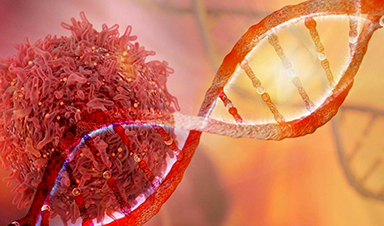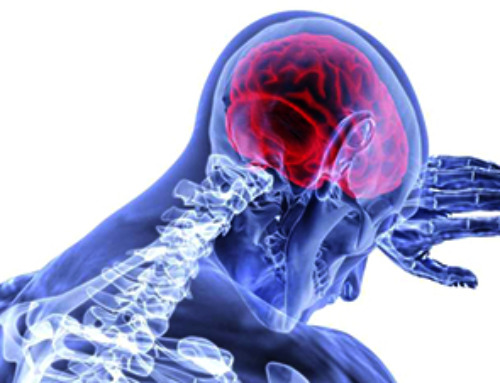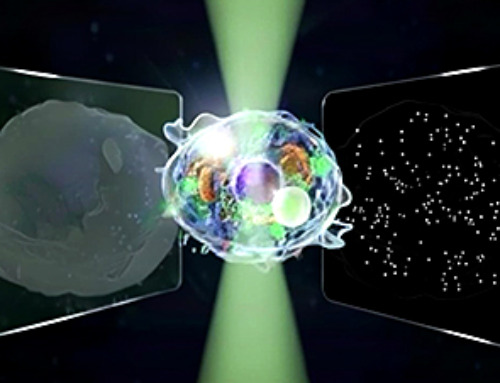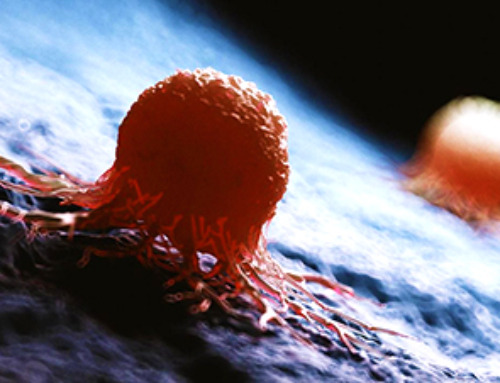Harnessing generative AI, MIT scientists have created groundbreaking antibiotics with unique membrane-targeting mechanisms, offering fresh hope against two of the world’s most formidable drug-resistant pathogens.
With the help of artificial intelligence, MIT researchers have designed entirely new antibiotics capable of tackling two of today’s toughest bacterial threats: drug-resistant Neisseria gonorrhoeae and multi-drug-resistant Staphylococcus aureus (MRSA).
Using generative AI, the team explored an enormous chemical universe, designing more than 36 million hypothetical compounds and screening them computationally for antimicrobial potential. The most promising candidates turned out to be structurally unlike any existing antibiotic and appear to attack bacteria by novel mechanisms, chiefly by disrupting their protective cell membranes.
“We’re excited about the new possibilities that this project opens up for antibiotics development,” says James Collins, senior author of the study and the Termeer Professor of Medical Engineering and Science at MIT. “Our work shows the power of AI from a drug design standpoint, and enables us to exploit much larger chemical spaces that were previously inaccessible.” The results are published in the journal Cell, with MIT postdoc Aarti Krishnan, former postdoc Melis Anahtar ’08, and Jacqueline Valeri, PhD ’23, as lead authors.
Expanding the search
For decades, new antibiotics have largely been minor variations on old ones. In the past 45 years, only a few dozen have been approved by the U.S. Food and Drug Administration, and resistance to many of them is rising fast. Globally, drug-resistant bacterial infections are estimated to contribute to nearly 5 million deaths annually.
Collins and his colleagues at MIT’s Antibiotics-AI Project have already made headlines by using AI to screen existing chemical libraries, discovering candidates such as halicin and abaucin. This time, they pushed further, tasking AI with inventing entirely new molecules that don’t yet exist in any database.
The researchers used two strategies. In one, they began with a known chemical fragment that had antimicrobial activity and asked their algorithms to build full molecules around it. In the other, they let the AI generate plausible molecules from scratch, guided only by chemical rules rather than any specific starting point.
Targeting N. gonorrhoeae
The fragment-based search began with a massive library of about 45 million possible chemical fragments, made from combinations of carbon, nitrogen, oxygen, fluorine, chlorine, and sulfur, plus options from Enamine’s REadily AccessibLe (REAL) space. A machine-learning model previously trained to spot antibacterial activity against N. gonorrhoeae narrowed this pool to 4 million. Filtering out toxic, unstable, or already-known antibiotic-like structures left about 1 million candidates.
Further screening led to a fragment called F1, which the team fed into two generative AI systems. One, chemically reasonable mutations (CReM), tweak a starting molecule by adding, swapping, or removing atoms and groups. The other, a fragment-based variational autoencoder (F-VAE), builds complete molecules by learning how fragments are typically combined, based on over 1 million examples from the ChEMBL database.
These algorithms produced about 7 million F1-containing candidates, which were whittled down to 1,000 and then to 80, which were considered suitable for synthesis. Only two could be made by chemical vendors, and one, dubbed NG1, proved highly effective against N. gonorrhoeae in both lab tests and a mouse model of drug-resistant gonorrhea. NG1 works by interfering with LptA, a protein critical for constructing the bacterium’s outer membrane, fatally compromising the cell.
Designing without constraints
The second approach targeted S. aureus, this time with no predefined fragment. Again, using CReM and a variational autoencoder, the AI generated over 29 million chemically plausible molecules. After applying the same filters, about 90 remained. Twenty-two of these were synthesized, and six showed potent activity against multidrug-resistant S. aureus in lab tests. The most promising, DN1, cleared MRSA skin infections in mice. Like NG1, DN1 appears to damage bacterial membranes, but through broader mechanisms not tied to a single protein.
Next steps
Phare Bio, a nonprofit partner in the Antibiotics-AI Project, is now refining NG1 and DN1 to prepare them for more advanced testing. “We’re exploring analogs and advancing the best candidates preclinically, through medicinal chemistry work,” Collins says. “We’re also excited about applying these platforms toward other bacterial pathogens, notably Mycobacterium tuberculosis and Pseudomonas aeruginosa.”
For a field where resistance often outpaces discovery, the ability to rapidly explore vast, uncharted chemical space offers a fresh advantage. By combining computational muscle with medicinal chemistry, the MIT team hopes to stay ahead in the race against antibiotic resistance and perhaps rewrite the rulebook for how new drugs are found.
- Krishnan, A., Anahtar, M. N., Valeri, J. A., Jin, W., Donghia, N. M., Sieben, L., Luttens, A., Zhang, Y., Modaresi, S. M., Hennes, A., Fromer, J., Bandyopadhyay, P., Chen, J. C., Rehman, D., Desai, R., Edwards, P., Lach, R. S., Aschtgen, M., Gaborieau, M., . . . Collins, J. J. (2025). A generative deep learning approach to de novo antibiotic design. Cell. DOI: 10.1016/j.cell.2025.07.033, https://www.sciencedirect.com/science/article/abs/pii/S0092867425008554
News
Very low LDL-cholesterol correlates to fewer heart problems after stroke
Brigham and Women's Hospital's TIMI Study Group reports that in patients with prior ischemic stroke, very low achieved LDL-cholesterol correlated with fewer major adverse cardiovascular events and fewer recurrent strokes, without an apparent increase [...]
“Great Unified Microscope” Reveals Hidden Micro and Nano Worlds Inside Living Cells
University of Tokyo researchers have created a powerful new microscope that captures both forward- and back-scattered light at once, letting scientists see everything from large cell structures to tiny nanoscale particles in a single shot. Researchers [...]
Breakthrough Alzheimer’s Drug Has a Hidden Problem
Researchers in Japan found that although the Alzheimer’s drug lecanemab successfully removes amyloid plaques from the brain, it does not restore the brain’s waste-clearing system within the first few months of treatment. The study suggests that [...]
Concerning New Research Reveals Colon Cancer Is Skyrocketing in Adults Under 50
Colorectal cancer is striking younger adults at alarming rates, driven by lifestyle and genetic factors. Colorectal cancer (CRC) develops when abnormal cells grow uncontrollably in the colon or rectum, forming tumors that can eventually [...]
Scientists Discover a Natural, Non-Addictive Way To Block Pain That Could Replace Opioids
Scientists have discovered that the body can naturally dull pain through its own localized “benzodiazepine-like” peptides. A groundbreaking study led by a University of Leeds scientist has unveiled new insights into how the body manages pain, [...]
GLP-1 Drugs Like Ozempic Work, but New Research Reveals a Major Catch
Three new Cochrane reviews find evidence that GLP-1 drugs lead to clinically meaningful weight loss, though industry-funded studies raise concerns. Three new reviews from Cochrane have found that GLP-1 medications can lead to significant [...]
How a Palm-Sized Laser Could Change Medicine and Manufacturing
Researchers have developed an innovative and versatile system designed for a new generation of short-pulse lasers. Lasers that produce extremely short bursts of light are known for their remarkable precision, making them indispensable tools [...]
New nanoparticles stimulate the immune system to attack ovarian tumors
Cancer immunotherapy, which uses drugs that stimulate the body’s immune cells to attack tumors, is a promising approach to treating many types of cancer. However, it doesn’t work well for some tumors, including ovarian [...]
New Drug Kills Cancer 20,000x More Effectively With No Detectable Side Effects
By restructuring a common chemotherapy drug, scientists increased its potency by 20,000 times. In a significant step forward for cancer therapy, researchers at Northwestern University have redesigned the molecular structure of a well-known chemotherapy drug, greatly [...]
Lipid nanoparticles discovered that can deliver mRNA directly into heart muscle cells
Cardiovascular disease continues to be the leading cause of death worldwide. But advances in heart-failure therapeutics have stalled, largely due to the difficulty of delivering treatments at the cellular level. Now, a UC Berkeley-led [...]
The basic mechanisms of visual attention emerged over 500 million years ago, study suggests
The brain does not need its sophisticated cortex to interpret the visual world. A new study published in PLOS Biology demonstrates that a much older structure, the superior colliculus, contains the necessary circuitry to perform the [...]
AI Is Overheating. This New Technology Could Be the Fix
Engineers have developed a passive evaporative cooling membrane that dramatically improves heat removal for electronics and data centers Engineers at the University of California San Diego have created an innovative cooling system designed to greatly enhance [...]
New nanomedicine wipes out leukemia in animal study
In a promising advance for cancer treatment, Northwestern University scientists have re-engineered the molecular structure of a common chemotherapy drug, making it dramatically more soluble and effective and less toxic. In the new study, [...]
Mystery Solved: Scientists Find Cause for Unexplained, Deadly Diseases
A study reveals that a protein called RPA is essential for maintaining chromosome stability by stimulating telomerase. New findings from the University of Wisconsin-Madison suggest that problems with a key protein that helps preserve chromosome stability [...]
Nanotech Blocks Infection and Speed Up Chronic Wound Recovery
A new nanotech-based formulation using quercetin and omega-3 fatty acids shows promise in halting bacterial biofilms and boosting skin cell repair. Scientists have developed a nanotechnology-based treatment to fight bacterial biofilms in wound infections. The [...]
Researchers propose five key questions for effective adoption of AI in clinical practice
While Artificial Intelligence (AI) can be a powerful tool that physicians can use to help diagnose their patients and has great potential to improve accuracy, efficiency and patient safety, it has its drawbacks. It [...]





















